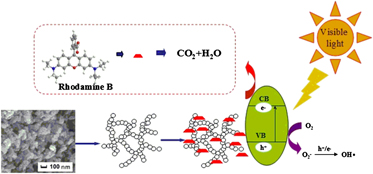Crossref Citations
This article has been cited by the following publications. This list is generated based on data provided by
Crossref.
Cheng, Shengjun
Liu, Xinling
Yun, Shan
Luo, Hongjie
and
Gao, Yanfeng
2014.
SiO2/TiO2 composite aerogels: Preparation via ambient pressure drying and photocatalytic performance.
Ceramics International,
Vol. 40,
Issue. 9,
p.
13781.
Wei, Wei
Lü, Xiaomeng
Jiang, Deli
Yan, Zaoxue
Chen, Min
and
Xie, Jimin
2014.
A novel route for synthesis of UV-resistant hydrophobic titania-containing silica aerogels by using potassium titanate as precursor.
Dalton Transactions,
Vol. 43,
Issue. 25,
p.
9456.
Yang, Jingfeng
Wang, Qihua
and
Wang, Tingmei
2017.
Effects of Ti Addition on Alumina/Titania Composite Aerogels Synthesized by Sol-Gel Process and Supercritical Ethanol Drying.
Journal of the Chinese Chemical Society,
Vol. 64,
Issue. 8,
p.
978.
Sadrieyeh, Sima
and
Malekfar, Rasoul
2017.
The effects of hydrolysis level on structural properties of titania aerogels.
Journal of Non-Crystalline Solids,
Vol. 457,
Issue. ,
p.
175.
Lee, Byeong-Min
Moon, Wonjoon
Baek, Kiheon
Park, Kyou-Hwa
Chung, Shin Hye
and
Chung, Gehoon
2023.
Ultraviolet irradiation confers titanium oxide oleophilicity.
Journal of Materials Science,
Vol. 58,
Issue. 12,
p.
5258.
Khalil, Mahmoud
and
El‐Rassy, Houssam
2024.
Aerogels for Energy Saving and Storage.
p.
128.
Obrero, Jose M.
Contreras-Bernal, Lidia
Aparicio Rebollo, Francisco J.
Rojas, Teresa C.
Ferrer, Francisco J.
Orozco, Noe
Saghi, Zineb
Czermak, Triana
Pedrosa, Jose M.
López-Santos, Carmen
Ostrikov, Kostya Ken
Borras, Ana
Sánchez-Valencia, Juan Ramón
and
Barranco, Angel
2024.
Conformal TiO2 Aerogel-Like Films by Plasma Deposition: from Omniphobic Antireflective Coatings to Perovskite Solar Cell Photoelectrodes.
ACS Applied Materials & Interfaces,
Vol. 16,
Issue. 30,
p.
39745.
